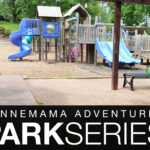Pioneer Cemetery stands as a silent testament to Boise’s earliest days, the oldest cemetery in the city still in continuous use. Long before official designations, this land north of Warm Springs Avenue became a final resting place, its story beginning informally in 1863 with the first settlers of the area.
From Unsanctioned Ground to Community Cemetery
The narrative of Pioneer Cemetery officially begins in 1868, when Ada County records document Michael Keppler, a local entrepreneur, receiving a Federal Land Grant Patent for 120 acres encompassing the future cemetery grounds. Keppler then transferred the land to John Krall in February 1869, another prominent figure in local business. Even with private ownership, a portion of this land continued to serve as a public burial ground. This informal arrangement continued until 1872, marking a turning point in the cemetery’s organized history.
The Lodges and Formal Division
In 1872, a significant purchase formalized the cemetery’s structure. John Krall sold a 5-acre plot to two esteemed fraternal organizations: the Masons and the Independent Order of Odd Fellows. This land was explicitly designated for the burial of their members and families. Following this acquisition, Ada County Surveyor P.W. Bell created a detailed platt map on October 1, 1872. This map meticulously divided the 5-acre site into distinct sections for each lodge, establishing a formal layout that would govern the cemetery’s administration for almost half a century. The Masonic and Odd Fellows lodges then shared the responsibility for the cemetery’s upkeep, equally dividing the maintenance expenses.
Transition to City Stewardship
As Boise expanded and Morris Hill Cemetery opened in 1882 to meet the needs of a growing population, Pioneer Cemetery faced new challenges. The rising costs of maintenance, coupled with the availability of newer burial grounds, strained the resources of the Masonic Lodge. Ultimately, the Odd Fellows took a decisive step, officially deeding their section of Pioneer Cemetery to the City of Boise on June 1, 1920. Since then, Boise Parks and Recreation has undertaken the responsibility of maintaining this historic site, ensuring its preservation for future generations.
Unearthing Stories from Stone
Pioneer Cemetery holds 1,796 marked graves, a number that only hints at the true number of individuals interred within its grounds. Formal death records in Idaho were not consistently kept until the 20th century, and obituaries were not always published, especially in the early days. Consequently, grave markers and surviving mortuary records are often the only clues to the earliest burials. Many of the first interments were likely handled privately by families, and time has erased many markers, particularly those made of wood.
Despite the lost histories, the remaining headstones offer a glimpse into Idaho’s past. The earliest legible marker commemorates Carrie Logan, daughter of Thomas and Caroline Logan, who died on August 22, 1864. Her marker represents the oldest tangible connection to the cemetery’s initial years. Among those memorialized are eleven former Boise mayors, eight Ada County sheriffs, and five Idaho governors: Edward A. Stevenson, George L. Shoup, Frank W. Hunt, Robert E. Smylie, and Cecil D. Andrus. The lives represented in Pioneer Cemetery weave together a rich tapestry of Boise’s development.
Revitalization and Remembrance
Over time, Pioneer Cemetery experienced periods of neglect. The original fence erected by the lodges deteriorated, headstones were stolen or vandalized, and the elements took their toll on the aging memorials. However, in 1990, marking a century of dedication, the Boise Metro Rotary Club partnered with the Parks and Recreation Department to initiate a significant restoration project. This collaborative effort resulted in a new fence, the restoration of damaged areas, and the creation of an interpretive park area at the cemetery’s perimeter. This revitalization ensured that Pioneer Cemetery would continue to stand as a preserved landmark, honoring the pioneers of Boise and their enduring legacy.

